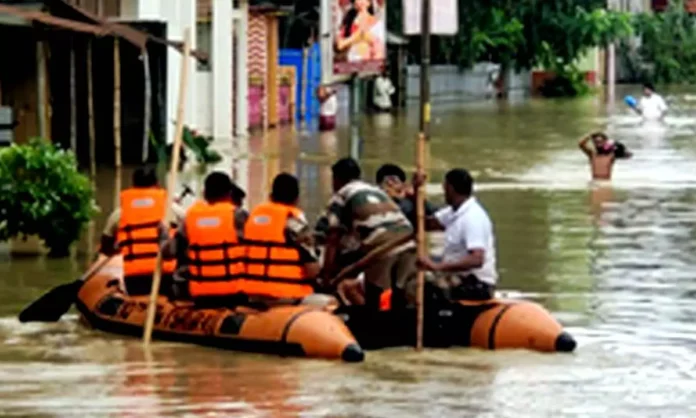The state of Tripura is ramping up its relief efforts as floodwaters continue to wreak havoc across the region. Since the early hours of the morning, government officials, in collaboration with the Indian Air Force, have been working tirelessly to deliver essential supplies to those affected by the floods. The situation remains dire, but the combined efforts of state agencies and the military aim to provide much-needed relief to the thousands of residents stranded by the rising waters.
The floods, which have devastated large swathes of the state, have left many communities cut off from basic necessities. The state government, recognizing the urgency of the situation, has mobilized all available resources to ensure that aid reaches the most vulnerable populations. In particular, the focus has been on delivering food, clean water, and medical supplies to the flood-affected areas.
The Indian Air Force has been playing a crucial role in these efforts. MI-17 helicopters have been deployed to air-drop thousands of aid packets to regions that are otherwise inaccessible due to the floodwaters. These packets contain essential items such as rice, pulses, bottled water, and basic medical supplies, which are critical for the survival of those who have been cut off from the rest of the state.
The air-dropping of supplies has been concentrated in the most severely affected districts, including Gomati, Sepahijala, and Khowai. These areas have experienced some of the worst flooding in recent memory, with homes submerged and roads completely washed away. The state government has identified these districts as priority areas for relief operations.
In addition to the air-dropped supplies, the state government has also dispatched trucks carrying additional relief materials to regions where road access is still possible. These trucks are transporting larger quantities of food, water, and other essential goods, which will be distributed by local authorities to ensure that all affected residents receive the aid they need.
The Chief Minister of Tripura, Dr. Manik Saha, has been closely monitoring the relief operations. He has urged all state agencies to work in coordination with the central government and the Indian Air Force to maximize the efficiency of the relief efforts. In a statement, he emphasized the importance of swift and decisive action to minimize the suffering of the flood-affected populations.
Meanwhile, rescue operations are ongoing in areas where residents are still trapped by the floodwaters. The National Disaster Response Force (NDRF) has been deployed to assist in these efforts, using boats and other equipment to reach those in need of evacuation. The NDRF teams are also providing first aid and other medical assistance to those who have been injured or are in poor health due to the flooding.
The scale of the disaster has prompted the state government to seek additional assistance from the central government. Officials have requested more helicopters and other resources to aid in the ongoing relief operations. The central government has responded positively, pledging full support to Tripura during this crisis.
The floods have also caused significant damage to infrastructure across the state. Roads, bridges, and power lines have been destroyed or severely damaged, making it even more challenging to deliver aid to those in need. The state government has already begun planning for the reconstruction of this critical infrastructure, but the immediate focus remains on providing relief to the affected populations.
As the relief efforts continue, the state government is urging residents in flood-prone areas to remain vigilant and to cooperate with authorities. Evacuation orders have been issued in several districts, and residents are being encouraged to move to higher ground or to designated relief camps where they can receive assistance.
The situation in Tripura remains fluid, with weather forecasts indicating the possibility of more rain in the coming days. The state government, however, is determined to stay ahead of the crisis, ensuring that all available resources are used to provide relief and support to those affected by the floods.




